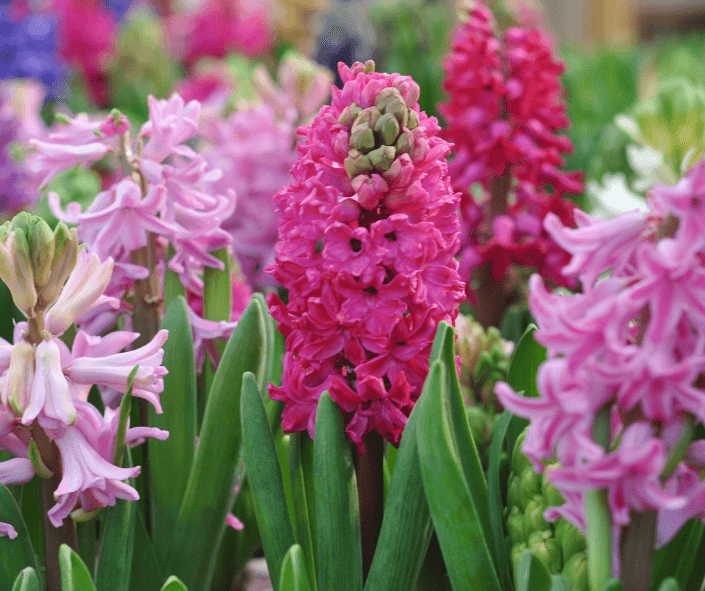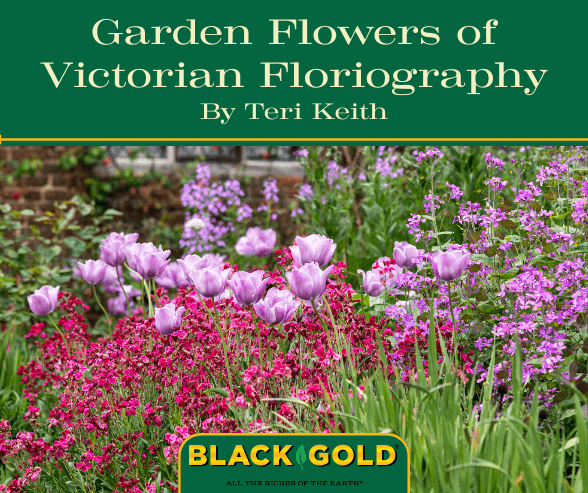
Since childhood, I have liked the styles and gardens of the Victorian Period (i.e., 1837-1901, the time of Queen Victoria’s reign in England). While driving around my hometown of South Bend, Indiana, I was inspired by the ornate Victorian houses with simple garden plots filled with brightly colored flowers, and I favored family Victorian heirlooms. My favorite was a decorative Victorian bowl on our mantle covered in delicate pink roses painted from the rose garden by my great-grandmother. The floral bowl was a beautiful reminder of a family garden of the past.
Later in life, I learned about the Victorian language of flowers, otherwise known as floriography. The knowledge has helped me fill my home garden with bountiful Victorian blooms filled with floral meaning, especially when my family bought our own Victorian home (built in 1885). I decorated the interior in the proper style with floral motifs, wallpaper, and decor. My gardens have been equally of the era. Old-fashioned roses, lilacs, bridal wreath spirea (Spirea x vanhouttei), spring daffodils, and other favorite Victorian garden plants dot my beds and landscaping–filling the spaces with meaning.
What is Floriography?
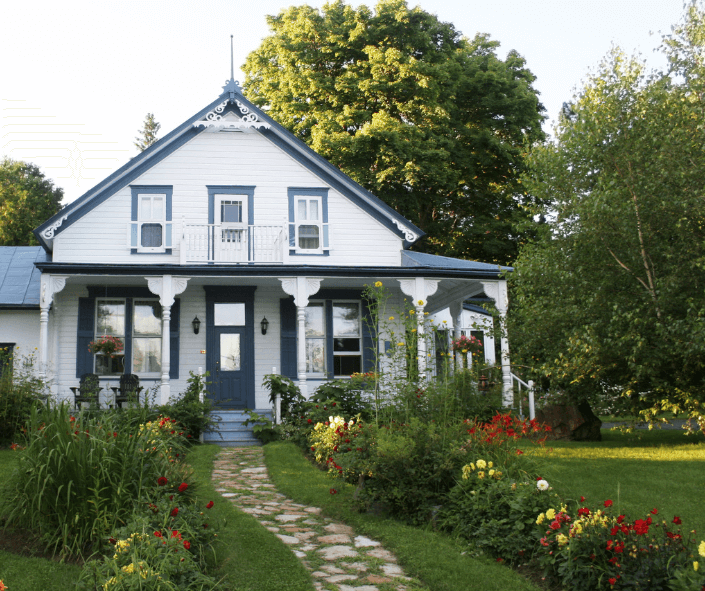
The popular Victorian language of flowers was formally known as the practice of floriography. It is the practice of giving meaning or symbolism to a plant, such as ‘warding off evil’ to garlic. Beyond Victorian England, cultures around the world have had their own floral languages, but the Victorians took it to an unprecedented level, giving social meaning to hundreds of flowers and plants.
From the printing of the first dictionaries of floriography (Le Language des Fleurs by Louise Cortanbert in 1819, to the last, The Language of Flowers by Routledge, illustrated by Kate Greenaway in 1884 (still in print)) people went hog wild, sending increasingly complex messages to each other using plants. More contemporary books, such as The Complete Language of Flowers by S. Theresa Dietz, keep the interest alive.
Meanings of Popular Victorian Flowers
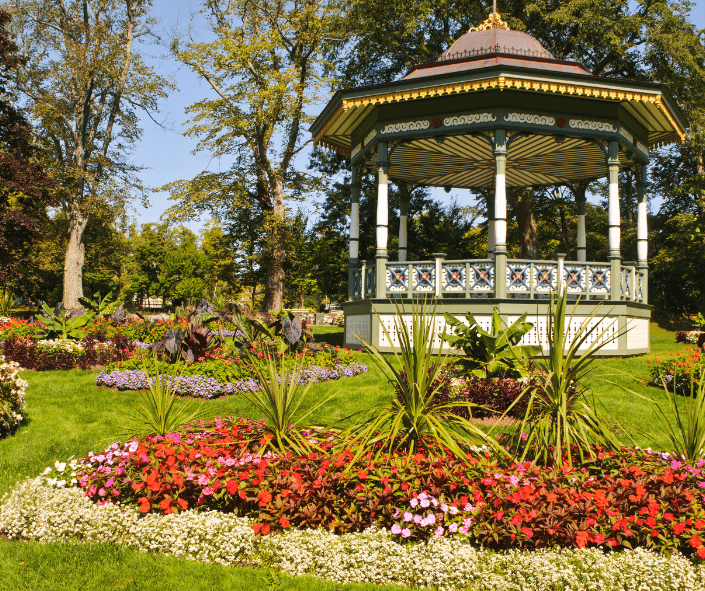
Especially popular with young adults, floral letters were sent in small-handpicked bouquets called tussie mussies or nosegays, which were wrapped in lace doilies and tied with satin ribbons. If a question was asked, a nosegay presented by the right hand meant “yes”, and by the left hand “no.” Nosegays given in an upright position represented a positive message, while one upside-down sent a negative one. Here are some of the more interesting definitions, from among hundreds, given to common plants. In some cases, such as carnations, hyacinths, and roses, the message varied depending on the flower color.
- Apple Blossom (Malus spp.) signifies spring, innocence, and good tidings for the future.
- Baby’s Breath (Gypsophila elegans) represents innocence.
- Busy Lizzy (Impatiens walleriana) represent tenderness and kindness.
- European Bluebell (Hyacinthoides hispanica) stands for humility.
- Carnation, Striped (Dianthus spp.): No, I can’t be with you.
- Cherry Blossom (Prunus spp.) represents education.
- Daffodil (Narcissus spp.) is the flower for chivalry.
- Dahlias (Dahlia spp.) inspire inner strength and dignity.
- Dandelion (Taraxacum officinalis) is the bloom of happiness (not in our yard, but the bees enjoy them).
- Daylilies (Hemerocallis hybrids) are given to inspire the recipient to forget their worries.
- Fourleaf Clover, as anticipated is a sign of good luck but the plant can also suggest “be mine.”
- Holly (Ilex spp.) branches ask the question, “Am I forgotten?”
- Hyacinths (Hyacinthus orientalis) stand for the following depending on color: yellow=jealousy, pink=playful joy, purple=deep regret, white=love and prayer.
- Purple lilac (Syringa vulgaris) blooms are a sign of happiness and tranquility.
- Lily-of-the-Valley (Convallaria majalis) represent the tears of the Virgin Mary.
- Mints (Mentha spp.) are virtuous.
- Oak Leaves (Quercus spp.) suggest bravery.
- Yellow roses (Rosa spp.) are a sign of friendship and joy.
- Red roses (Rosa spp.) continue to be a sign of love, which is why a dozen red roses are given to a beloved partner on Valentine’s Day or anniversaries.
- Dried white rose petals mean death is preferable to loss of virtue.
- Bridal wreath spirea (Spirea x vanhouttei) has bountiful white spring flowers representing prosperity, wealth, and victory.
- Sunflowers (Helianthus annuus) signify long life, lasting happiness, and pride.
- Red tulips (Tulipa spp.) are a declaration of love.
- White violets (Viola odorata) suggest, “Let’s take a chance on happiness.”
- Mistletoe (Viscum album) continues to be used for celebratory Christmas kisses.
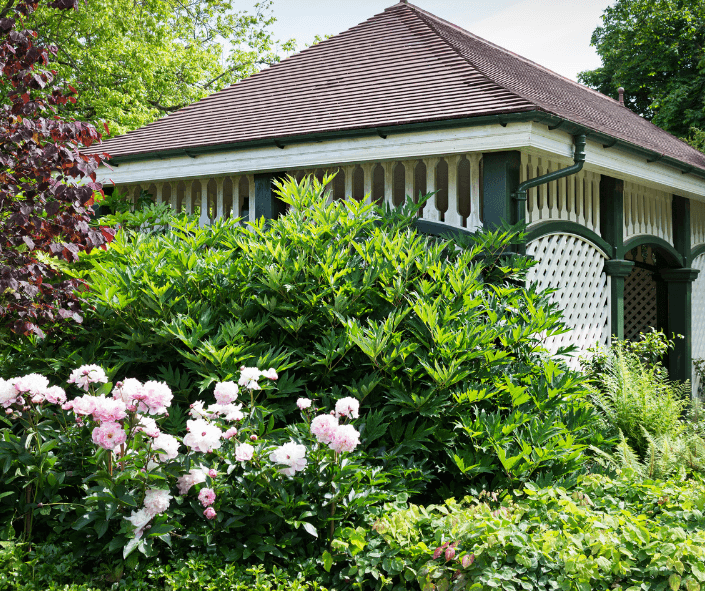
Of course, these are just a few of the flowers used in floriography messages. At the time, people relied on floriography for social fun. Entertainment often consisted of conversing with one another. Sometimes I wish the same social standards applied today. Technology is often considered more important than knowing one’s next-door neighbor. What a pity. Either way, there are still several books available online on the subject of floriography, should you be tempted to delve further into the subject. Then you can fill your garden with meaning.
For me, of all the flowers listed, I am looking most forward to spring Hyacinths. The hyacinth is a fantastic-smelling, brightly colored, spring flowering bulb, and a flower of choice in the 19th Century. They were planted in sweeps to create patterned floral beds, all the rage at the time, and hyacinths are one of the easiest bulbs to force indoors giving an early taste of spring. At its height, Holland growers offered almost 2000 varieties of hyacinths. Now there are only about around 30 varieties commonly sold.
A good place to find antique hyacinths is Old House Gardens. Their heirloom Easter Basket sampler is a good place to start or look for them at your local garden center in the spring. They thrive in garden soil amended with Black Gold Garden Compost Blend.
